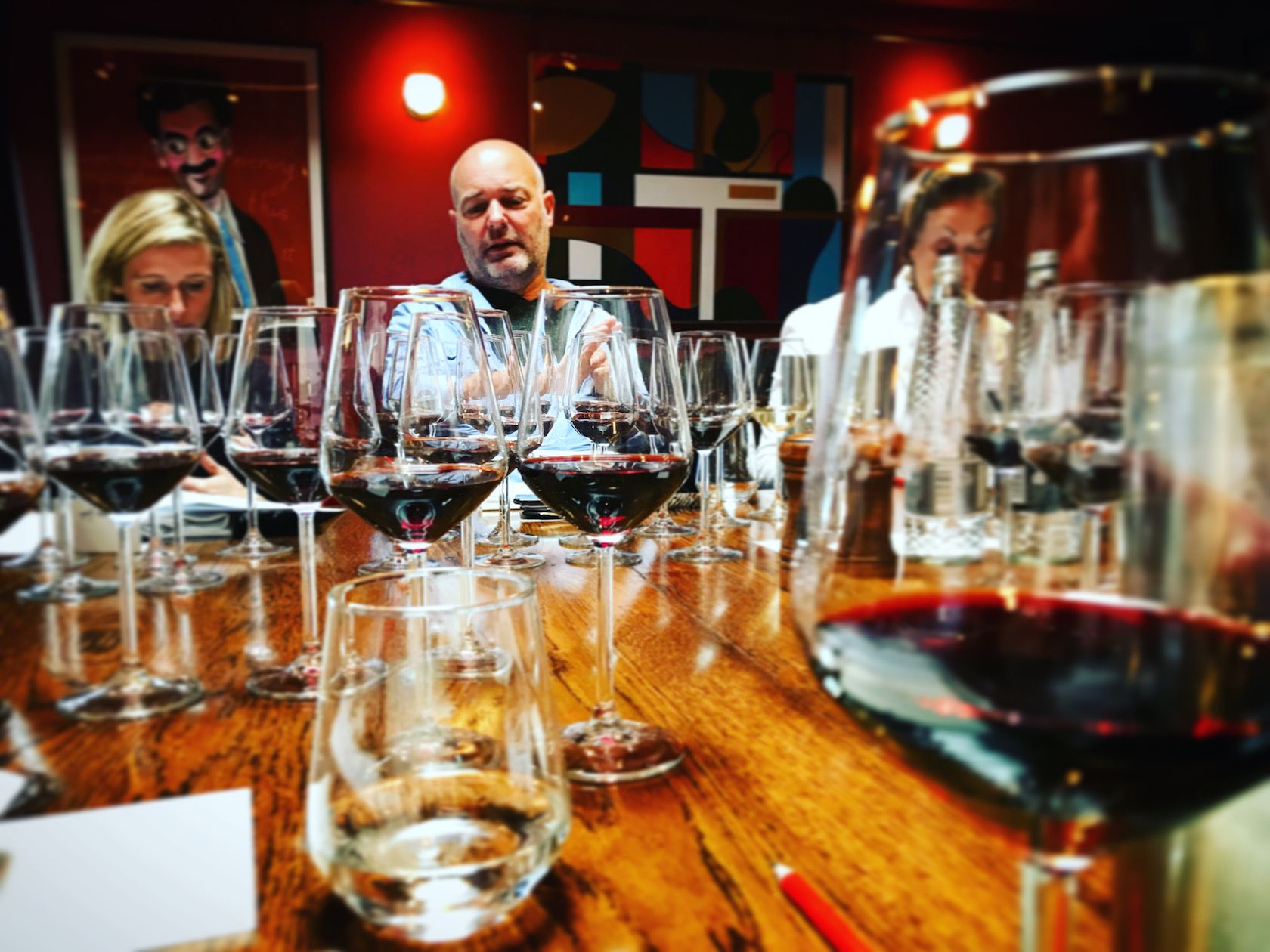“This whole wine project has been quite novel,” says Skinner, “I was the only one who had any wine knowledge, Roger didn’t know the difference between hectares and acres which was ironic given he was in the real estate business.”
When you look at the progress of New Zealand’s Elephant Hill winery, resplendent on its spectacular Te Awanga site overlooking Hawke’s Bay, Fatboy Slim’s ‘You’ve Come a Long Way, Baby’ seems an apt descriptor; with perhaps the addition of ‘and in a ridiculously short space of time’.
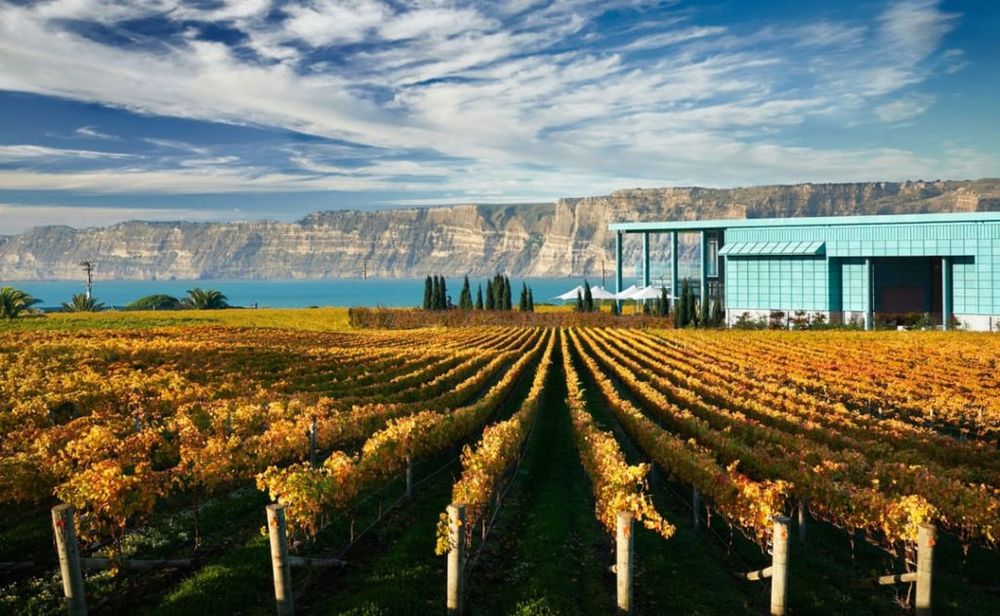
The sleek design and surroundings of Elephant Hill’s site at Te Awanga, Hawke’s Bay is gob-smackingly beautiful even by New Zealand standards
Sitting over lunch in a plush private dining room in the warren-like Groucho Club in London’s Soho district with chief winemaker Steve Skinner, and tasting library and new releases of just some of the estate’s 22 different cuvees, it is hard to believe that the winery only started in 2003 and only really turned the corner in 2013 in terms of world class winemaking. And the wines really are world class make no mistake.
We’re here to sample a range of his ‘Icon’ wines, the 100% Syrah Airavata and Bordeaux blend Hieronymous, along with some of the ‘Element’ series – single varietal/ site wines which are a lesson in terroir.
There are a lot of moving parts at Elephant Hill – it’s a winery and an award-wining restaurant and both are housed in a building seemingly designed for Blofeld, or some other character hellbent on world domination.
The ‘Icon’ wines are similarly complex with a cool sheen over them – from the actual quality of the wines themselves through to their slick label design. These are statement wines that started appearing soon after Elephant Hill started releasing wines in 2007, and were early indicators of the quality Elephant Hill had.
By blending from the three vineyard sites –Te Awanga, Bridge Pa and Gimblett Gravels – Skinner not only utilises the unique terroir of each but also takes advantage of each microclimate, helping him to avoid unfavourable vintage conditions. The result is a bewildering array of blending options.
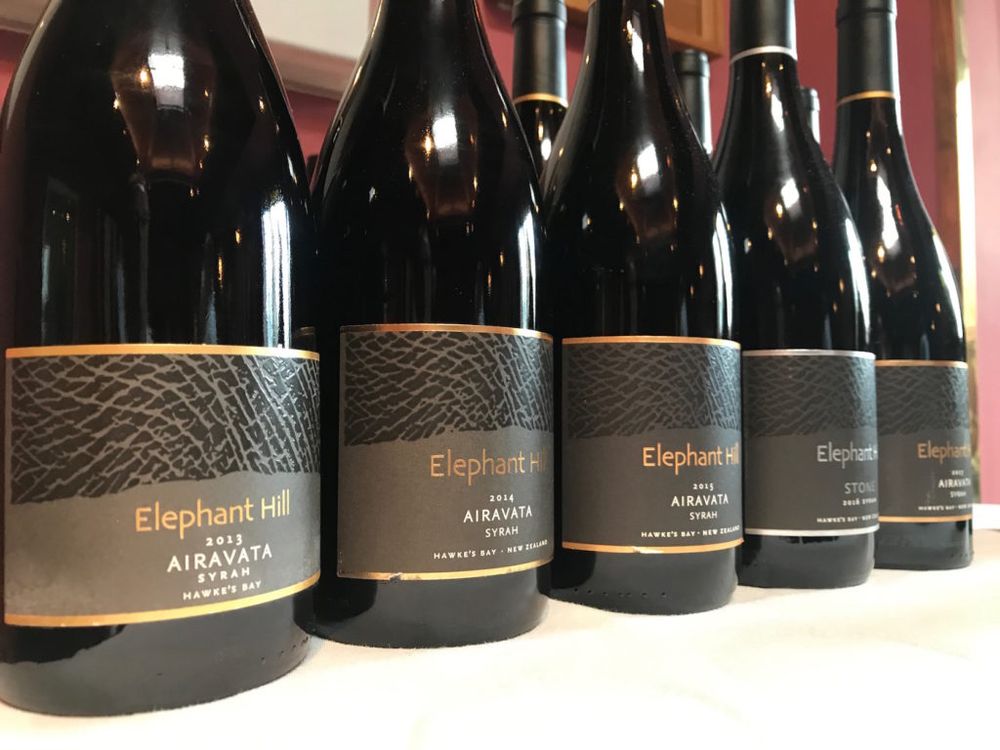
Take Airavata, for example – Skinner chose between 23 different parcels spread across his three very different vineyard sites, undertaking 35 hand picks per vintage. In fact since 2013 he estimates that he has overseen 100 separate Syrah ferments. If the wines weren’t so damn good you might wonder during the tasting whether the winemaking process isn’t too complicated.
It’s a by-product of playing catch-up with more established wineries, he says.
“The Airavata project is a by-product of being a young winery and trying to catch up. It’s the only way of learning by breaking that up into multiple ferments per vintage – we typically do 35 hand picks per vintage across the three sites – across different clones, different combinations (co-fermenting Viognier or not). There’s such a large range of parcels we can play with – in 2017 it was 20-23 parcels.”
If you examine the different components and the winemaking process for Airavata vintage by vintage (we taste the 2013. 2014, 2015 and 2017) the percentage of fruit from the different sites varies, as does the amount of Viognier, the amount of whole cluster used, new oak, time in the barrel… and Airavata is a single varietal wine!
When you get to Hieronymous (we taste 2013-2015) then you are getting really complicated – the wines differ wildly; where 2013 and 2015 are Cabernet Sauvignon dominant, 2014 is largely Malbec and Merlot. The 2015 has five varietals rather than three and there are Cabernet Franc and Tempranillo included where there is none in the 2013 and 2014.
Talking to Skinner about the vintage variations and how he met each challenge with an array of different fruit and winemaking technique you imagine him like a painter with an enormous palette of colours, or at a giant mixing desk with a bewildering array of knobs.
Talking about the 2017 vintage, which was a particularly challenging year in Hawke’s Bay, Skinner reveals he picked just 185 tons of the 300 tons he targeted. His team sorted out a further 30 tons, meaning that they only had 50% of the fruit they intended.
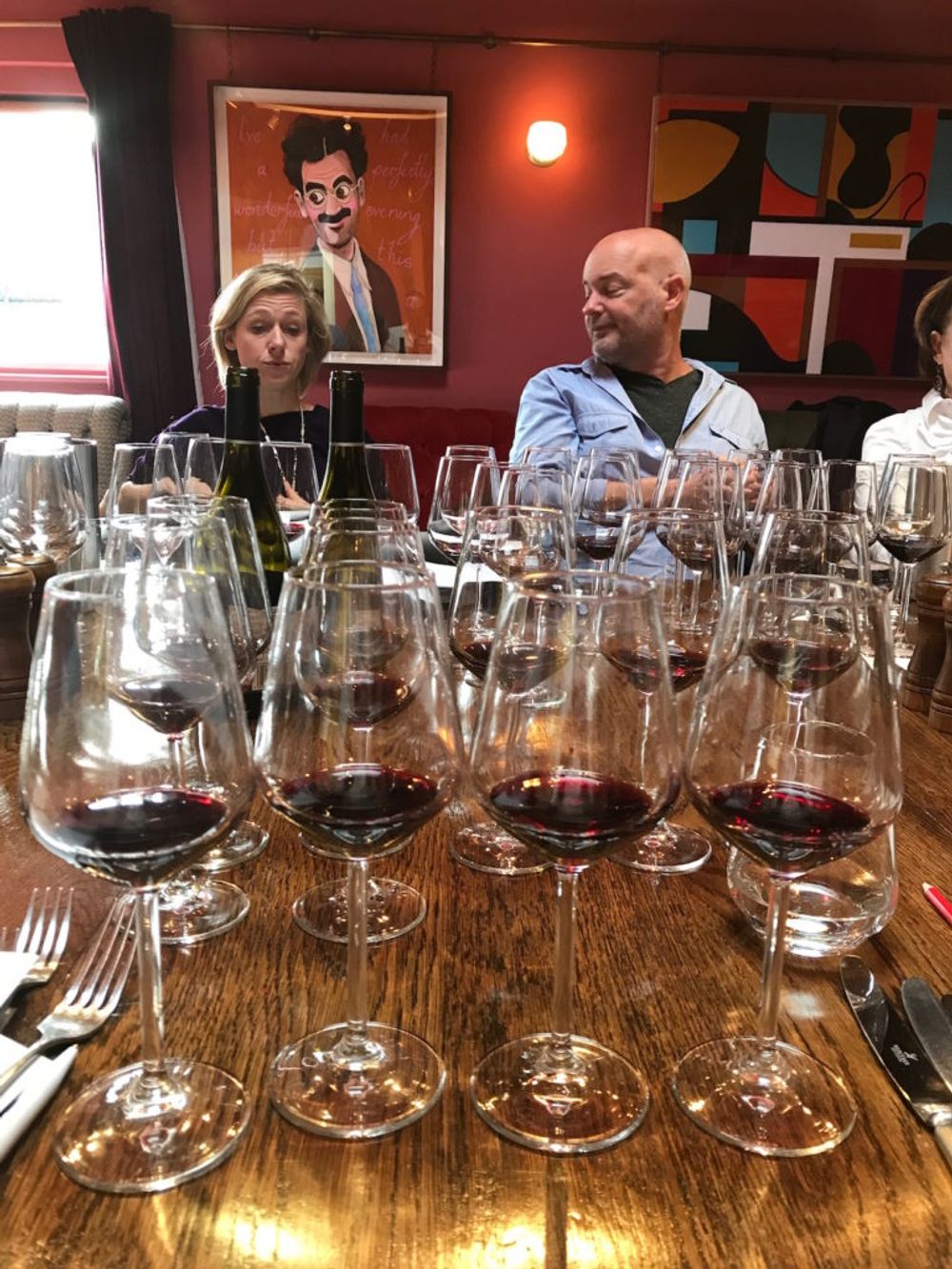
Steve Skinner with wine expert Rebecca Gibb MW at the Groucho, London
“You can’t say that Hawke’s Bay only does Syrah in good vintages,” says Skinner “But it can define you as a winery – it is important to do things in a bad vintage – if you can come out of it and make something good that’s where you can start building a reputation.”
Humble beginnings
As for Skinner’s own reputation as a winemaker that started at Trinity Hill where he worked for seven years, now making a total of Hawke’s Bay 21 vintages. Remarkable then that his entrance into the wine world was purely by accident.
“Before wine I was a misguided economist. Then, while I was on holiday in Hawke’s Bay in 1999 I picked up a wine magazine and saw a local ad for a wine programme. I thought ‘I’ll give it a go I could always go back to Auckland if it doesn’t work out’. So I went to Trinity Hill and after three years I became an assistant winemaker.”
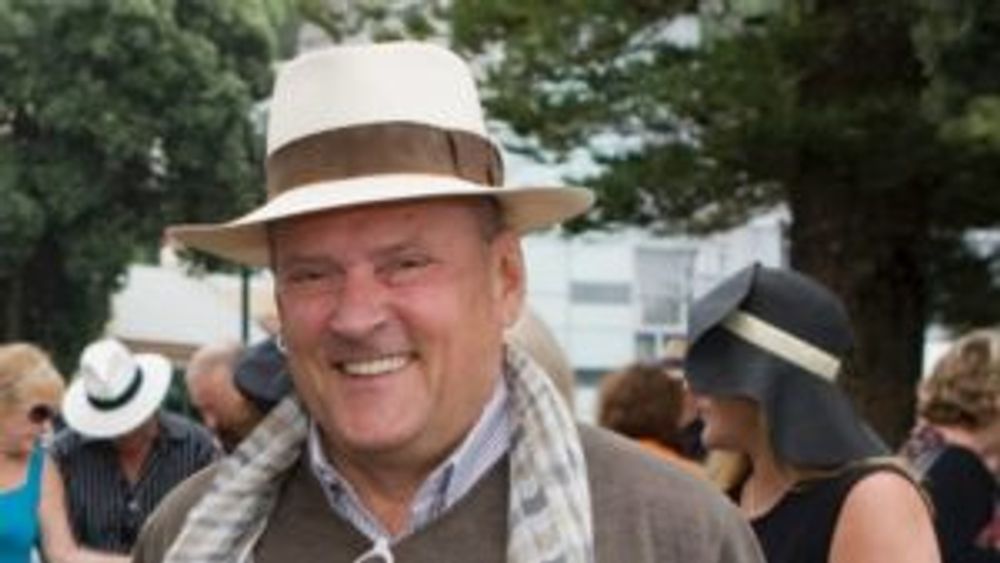
Elephant Hill founder Roger Weiss died unexpectedly in 2017
While Skinner was earning his stripes at Trinity Hill, Roger and Reydan Weiss were buying land at Te Awanga to build Elephant Hill there. The year was 2003 although their intention was never to build a project of such magnitude.
“This whole wine project has been quite novel,” continues Skinner, “I was the only one who had any wine knowledge, Roger didn’t know the difference between hectares and acres which was ironic given he was in the real estate business, so he thought it was 10% the size it actually was going to be. So it went from a small to very large project.”
“They had several varieties planted but had no real idea of what they were going to do with them, the idea being that if we wanted to sell something we would.”
The rest as they say is history. Elephant Hill sold 150 cases of wine in 2013, just five years later they are selling 600 cases and the reputation is growing year by year.
It’s all elementary
While Airavata is an multi-site expression of Syrah and Hieronymous is a multi-varietal blend, the ‘Element’ wines are a set of single vineyard expressions of single varieties – blissfully simple and very easy for the consumer to get a handle on, particularly if it is an international audience.
There are three ‘Elements’ – Sea, Earth and Stone – and they correspond to the three vineyard sites. The Sea wines are from the home Te Awanga vineyards next to the coast and are on heavy clay soils that give a nice floral quality to the wines, the vines are also influenced by the sea breeze and salinity. The Earth wines come from the Bridge Pa Triangle vineyard, noted for its top layer of earth. The Stone wines come from Gimblett Gravels which has stony soil.

The Sea Sauvignon Blanc is unlike most New Zealand expressions; Hawke’s Bay has a slightly riper style than Marlborough but this is beautifully tempered by the cooling effect of the ocean – the wine has a fine-grained texture and you can almost taste the sea spray in the wine.
Tasting Earth Syrah 2015 and Stone Syrah 2015 side by side, the differences are instantly recognisable. Earth Syrah is rich, ripe, has notes of blackcurrant confeiture, and a meaty/ blood quality held together by an intense, backbone of acidity. This Syrah from Bridge Pa can be enjoyed earlier and is more ‘Napa’, partly explained by Skinner using clone 870, a clone commonly found in Napa and which can soak up prodigious amount of whole cluster, which gives the wine that meaty/ blood quality.
The Stone Syrah, meanwhile, has greater elegance and detail. The fruit is dialled back and the mineral, stony texture further up in the foreground. Skinner reveals that at tastings people often go for the Earth over the Stone – understandable given its approachability – but I preferred the Stone.
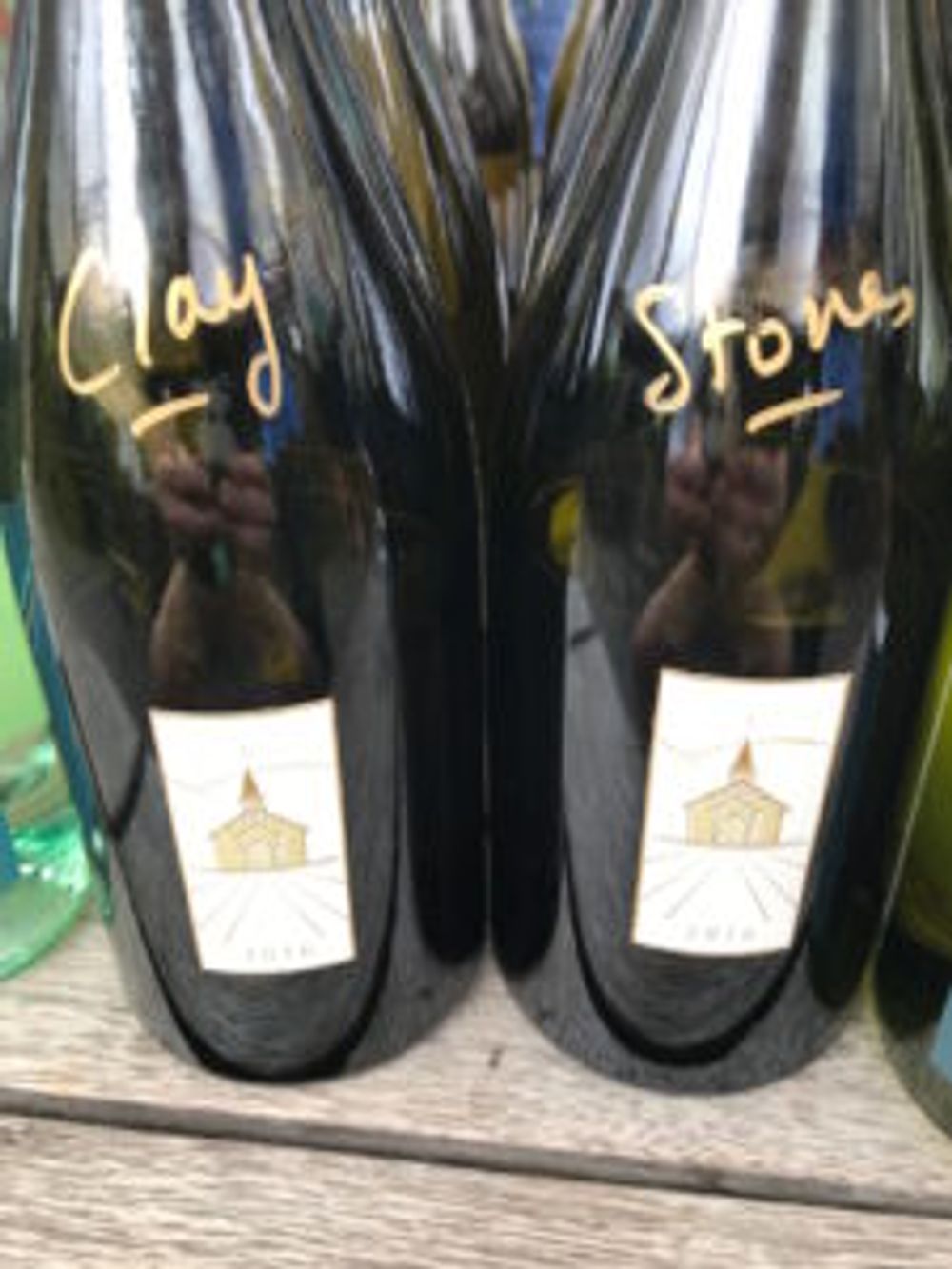
Marlborough’s Clos Henri has also starting making two cuvees with the terroir a key marketing factor
What I will say about the concept as a whole is that I think it’s a brilliant one. Recently I have seen great examples in Sancerre where consumers are buying wine according to soils type (with great play of it being made on the wine labels). On a recent trip to Marlborough it was good to see Clos Henri (which has ties with Sancerre) doing a similar thing on the labels of two of its single site Sauvignon Blancs.
That’s not all folks
At the tasting we also tried Sea Viognier 2018 which was very open, accessible, slightly herbal and opens out into richer flavours tempered by a nice edge of acidity and slight salinity. This was quite rounded and has got some baby fat but a nice depth of flavour too.
Unusual to get a single Cabernet Franc in Hawke’s Bay but the fruit that has been planted there in Gimblett Gravles is just showing its true worth. The Reserve Cabernet Franc 2016 has a leafy, peppery nose, a lot of ripeness and intensity but framed by excellent balance and acidity – a lovely register on the palate.
Elephant Hill Salomé 2016 which is Chardonnay from a cooler vintage that still has ripe fruit and fine texture, there’s a little of the light to medium toast wood apparent just slight, unobtrusive reductiveness.
Having tasted through the range the wines that would be on my buying list would be:
- Airavata 2015,
- Hieronymus 2014 and 2015
- Stone Syrah 2016 (the fruit is effectively de-classified Airavata)
- Reserve Cabernet Franc 2016
- Elephant Hill Salomé 2016
That’s not to say the other wines weren’t excellent – but to me these were the standouts.
The Elephant Hill wines are imported and distributed by Corney & Barrow.
